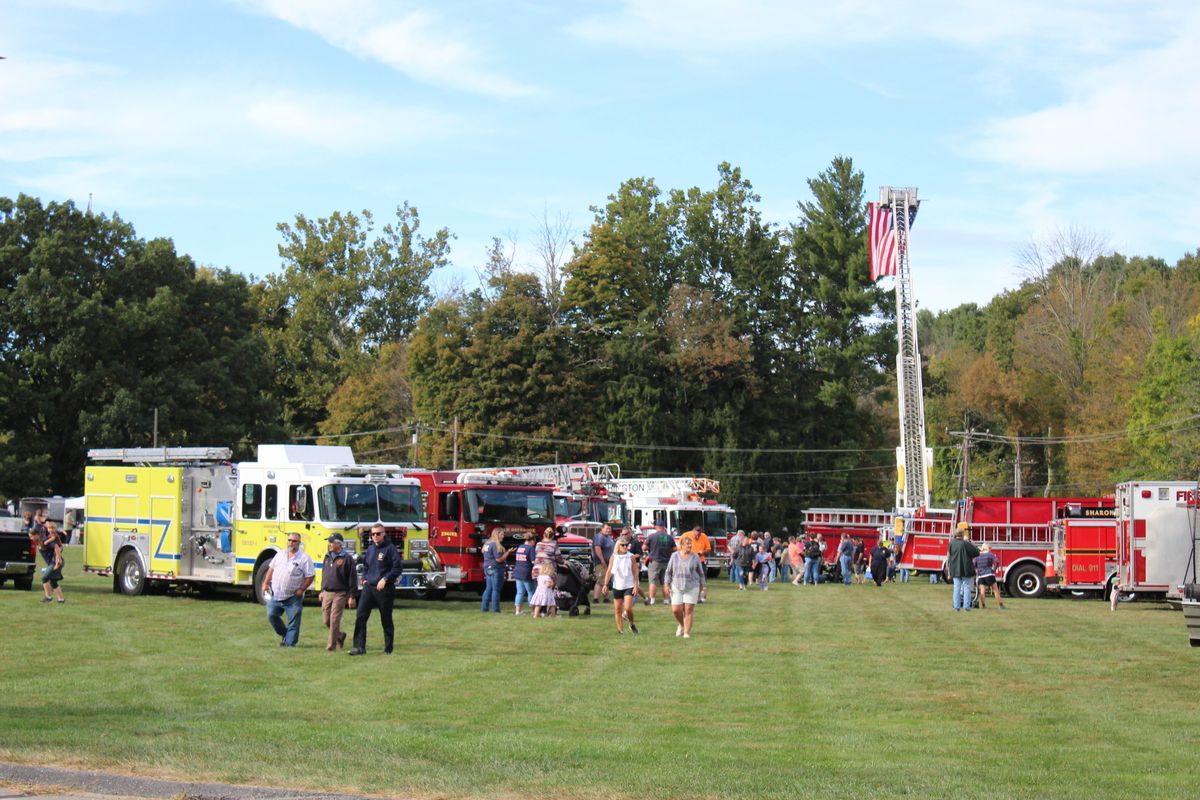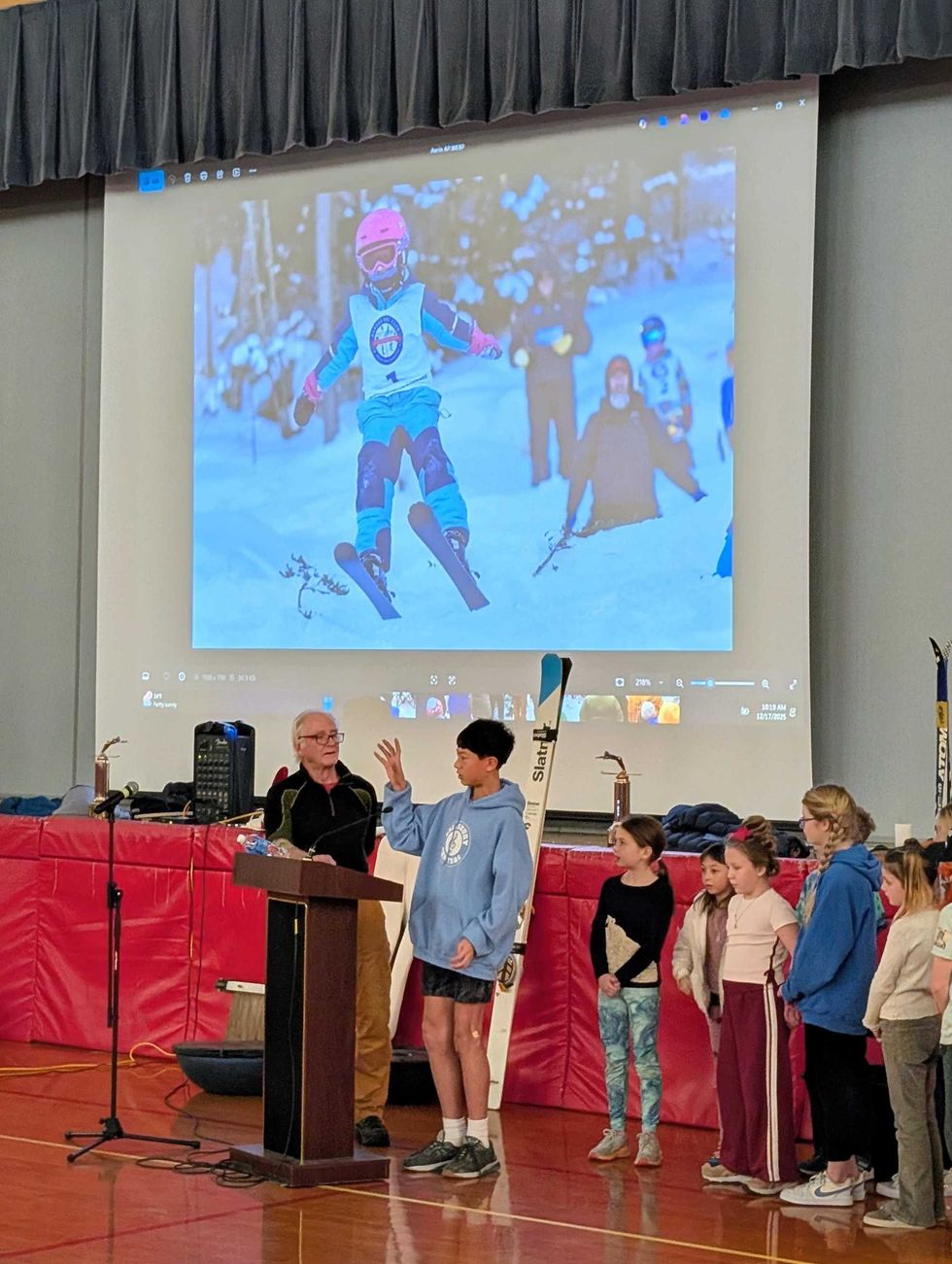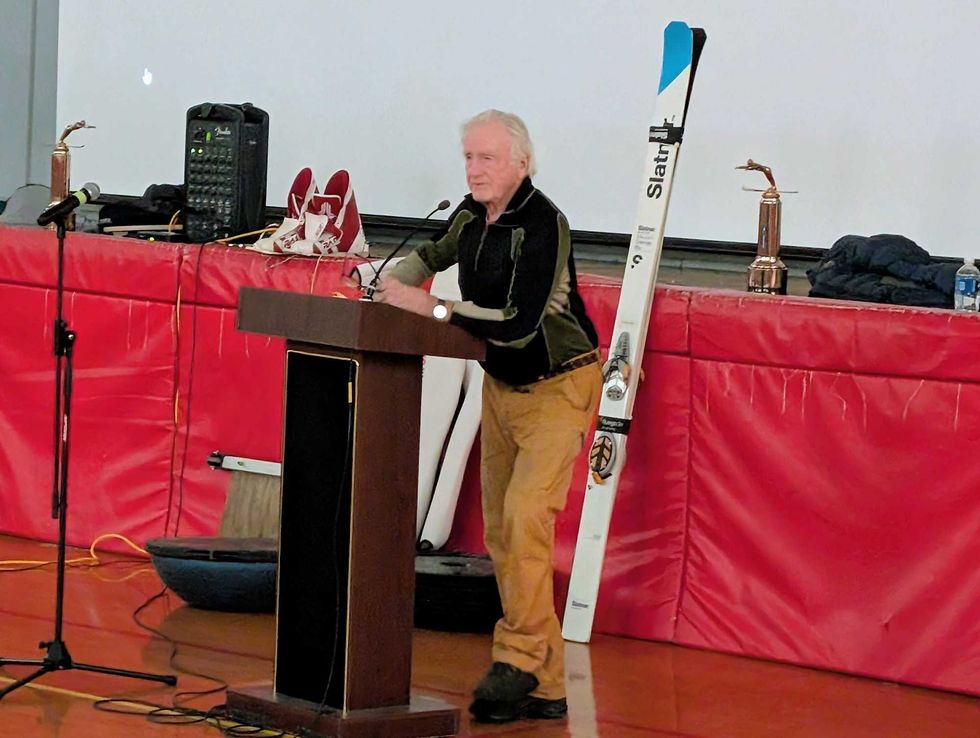Community turns out for parade and equipment display at HVRHS
Falls Village Fire Department’s 100th

Fire departments from across Connecticut participated in the show on Saturday, Sept. 21.
Photo by Patrick L. Sullivan
Falls Village Fire Department’s 100th

Fire departments from across Connecticut participated in the show on Saturday, Sept. 21.
FALLS VILLAGE — The Falls Village Volunteer Fire Department held a fire apparatus parade and show Saturday, Sept. 21 as part of its ongoing 100th anniversary celebration.
Fire departments from all over the state participated. A reporter, wandering around the Housatonic Valley Regional High School grounds, which was the destination of the parade, noted trucks from nearby (Salisbury, North Canaan), near-ish (Riverton, Northville, and Brick Mountain in New Hartford) and from a considerable distance (Old Saybrook, Wolcott).
The 30 or so pieces of apparatus at the high school represented about half of the total from the parade, First Selectman Dave Barger noted.
There were several vintage pieces on display, including “Old Number One,” an 1854 fire suppression machine purchased by Colchester in 1954 from the William C. Hunneman Fire Engine Company in Boston.
Old Number One cost $850 — including postage — as it was mailed from Boston.
Colchester received good value on the investment. Old Number One remained in service until 1924, when it was replaced by a newfangled gasoline-powered truck.
A little closer to home — and the present day — young Hudson Riva of North Canaan sat with a solemn expression in the driver’s seat of the Falls Village antique truck which was very similar to a 1924 REO truck from the Sharon fire department, parked on the opposite side of a tent containing historic firefighting artifacts.
This exhibit included scrapbooks. Within one of the scrapbooks was a photograph of a man Kent Allyn identified as his father at the wheel of a white ambulance with the Falls Village name attached.
Allyn said the photo dates from some time in the 1950s.
The backstory: Allyn’s brother was hit by a car, and it took some 90 minutes for an ambulance to get from Sharon to Falls Village.
Deeming this situation unacceptable, Falls Village purchased a hearse, painted it white, and thus had its own ambulance.
“Remember, we didn’t have EMTs then” said Allyn. “It was ‘load and go.’”
There were food trucks, a raffle, a merch table with sweatshirts and potholders, and music from the Tailgate Band.
And at the end of the evening, fireworks.
Students of Salisbury Central School watch ski jumpers soar during an assembly with Salisbury Winter Sports Association Wednesday, Dec. 17.
SALISBURY — Representatives of Salisbury Winter Sports Association gave a presentation at Salisbury Central School Wednesday, Dec. 17.
Former U.S. Olympic coach Larry Stone explained the fundamentals of the unique sport of ski jumping and its long history in Salisbury, where he learned to jump.
“When I was growing up here there were actually eight ski jumps just in this town in addition to the three down at Satre Hill,” he said. He noted that this winter will be the 100th year of Jumpfest at Satre Hill, named for the Satre brothers who moved from Norway in the 1920s. “They brought their sport with them and the first ski jump was actually when one of the Satres skied off of a barn roof in the center of Salisbury to show people how to do it.”
Mentioning the upcoming Winter Olympics in Cortina/Milan, Italy, Stone spoke of legendary Salisbury ski jumper Roy Sherwood who competed at Cortina in the 1956 Olympics.

Students at SCS saw videos of ski jumpers training and competing. Stone invited up students who had jumped at Satre Hill and 14 stepped forward.
One student was Aerin Sheil, who was asked what it feels like to jump: “It kind of feels like you’re flying. It’s a really good feeling.”
Gus Tripler, another student, said, “It’s like you’re suspended in the air and can see everything.”
He said his record distance of 18 meters was set in Vermont.
The student remarks gave way to closing comments that emphasized the school’s partnership with the Salisbury Winter Sports Association.
“Our partnership with SWSA is one of the most incredible things about Salisbury Central School,” Principal John Conklin said as he closed the assembly. He encouraged the students to attend Jumpfest Feb. 6 to 8.

Sophomore Eliana Lang enjoys her Housy Shack cookie.
Now in its second year, the Housy Shack is a hit among students. The special education department-run store that sells warm cookies, drinks and other snacks to students and teachers draws people to a room in the back hallway every time it’s open.
The smell of warm cookies welcomes visitors to the store with snacks, drinks and even Housy merchandise for sale. The cookies are definitely the favorite, sometimes lines go out the door to get one before they sell out.
The cookies are so popular that the store had to increase prices from 50 cents to a dollar and implement a four cookie per person maximum. The Shack sells about 40-100 cookies per day and has about 20-60 HVRHS customers visiting per day.
Julie Browning and Heather Strid, two of the HVRHS faculty members that help run the Shack, said their goal was to create real-world job experiences as well as real-world shopping experiences for students at HVRHS. “Learning the skills to work in the world can be taught in a classroom, but the lessons are more meaningful and valuable when they are applied in real work situations, which is what we create through the school store,” Browning said.
The original purpose for the store seems to be working, as several students are learning important skills. Students said the store taught them skills like counting money, checking inventory and cleanliness along with social skills and customer service that could help in the professional world after high school.

As the store quickly became a hit, organizers were faced with the challenge of finding funding. “When we started planning to start the school store two years ago we needed money to buy equipment, supplies and food to start it up but were not sure how to get it,” Browning said. “Mrs. Strid came up with the idea of applying for a grant from the 21st Century Fund to help us get started and they were so generous.” That grant has been crucial to the success and growth of the school store.
Not only does the Housy Shack benefit the special education department, students said it fosters a sense of community throughout the school. “School store cookies are my favorite thing ever. They brighten up my day,” said Eliana Lang, a sophomore at HVRHS. Dayana, one of the student staffers at the Housy Shack, said her favorite part of working in the school store is when students come in to make purchases. She enjoys talking to them and ringing up their orders on the cash register. The Housy Shack brings people together and offers the opportunity for students to connect with each other.
As the school year continues, the members of the school store look forward to expanding their inventory by creating and selling a variety of Housy merchandise — t-shirts, sweatshirts, water bottles, and more. “I have had several students put in requests for certain hats, key chains, etc. … so there will be more of that to come,” Browning said. Last school year, profits were all invested back into the school store. “This year we are hoping to make more of a profit and will look to use the money that we make for field trips, outings as well as opportunities to donate and give back to the community,” Browning said. They also would like to use the school store to fundraise for other causes. “Right now we are collecting donations for The Little Guild Animal Shelter, so if anyone has pet supplies they would like to donate please drop them off in exchange for a cookie,” Browning said.
Theater is sometimes just a way to be diverted, to escape from the real world. This is a good escape.
— Mr. Krupa, director
Housatonic’s Musical Theatre program is bringing “Guys and Dolls” to life this year, and the process is well underway. Auditions took place at the end of November, marking the beginning of the journey from casting to performing the musical this spring.
But with 28 students auditioning, the casting environment was competitive.
“It’s trying to fit different types of people that we have into the spot where the students are going to learn the most,” said music director Thomas Krupa. “I think that’s the fundamental thing. When you think about professional theater, it’s always who is absolutely the best possible puzzle piece.”
The process encouraged actors to lean into not only their dramatic skills, but comedic ones as well. Students had to showcase dance abilities, musical talents and chemistry with their costars.
Senior Richie Crane has participated in Housatonic musicals since his freshman year. He recalled the difficulty of auditioning. “I’ve been in over twenty five productions, and every time I audition I’m just as nervous,” Crane said. “In your initial audition, you are auditioning not only for the role you want, but the one that showcases the best of your skill sets and abilities. The nerves don’t go away, but they can help you succeed.”
Of the five leading roles being cast, eight students were offered callbacks. “Guys and Dolls” will be a predominantly senior leading cast, as well as an opportunity for those seniors to take one final bow on the Housatonic stage.
“It’s been wonderful to see the seniors grow,” said director Christiane Olson. “They all have a lot of experience now, so it’s wonderful to see them go from a little bit more timid and unsure to much more confident performers.”
Experience is usually crucial to the success of the production, but it’s the overall number of participants that sets Housatonic apart. For a small school, Housatonic didn’t have trouble attracting the right number of students to bring the show to life.
“If you have a show with just leads, you don’t have a world. The world of ‘Guys and Dolls’ is the hustle and bustle of New York City,” Krupa said. “If we have one actor in the show, we’re not going to have that hustle and bustle. So we need every single one of the 28 kids that auditioned.”
This year’s production is filled with comedic and dramatic talent. For the next few months, the cast will be preparing to bring the vibrant musical to the stage in the spring. And just a few weeks into rehearsals, it’s clear this is a show you wouldn’t want to miss.
“It’s a really fun, timeless show. It’s very funny, and there’s great music,” Krupa said. “Theater issometimes just a way to be diverted, to escape from the real world. This is a good escape.”